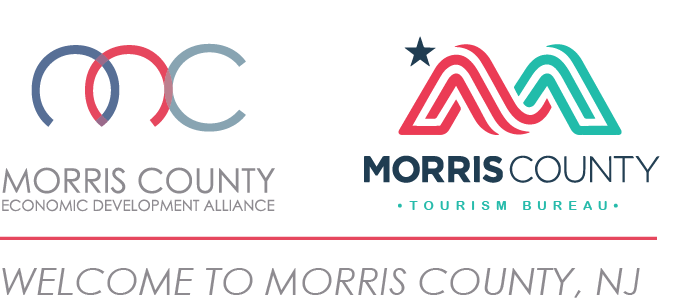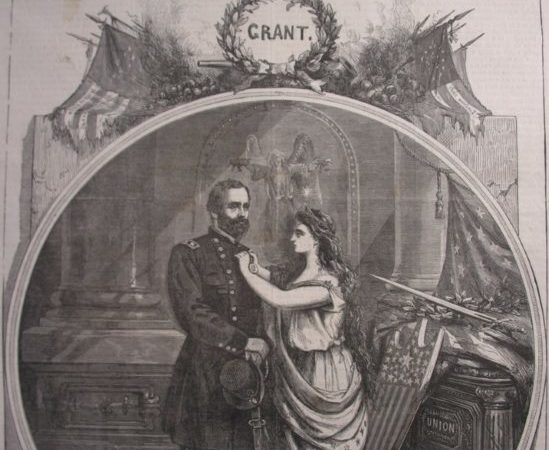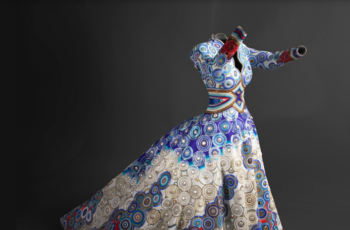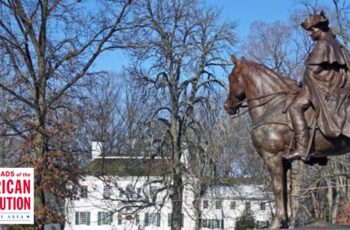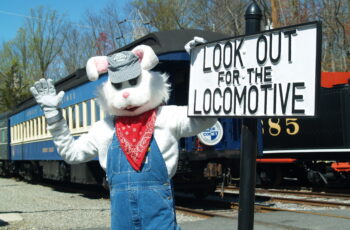By Ryan Hyman, Guest Contributor As the Presidential election draws closer, we take a look at Thomas Nast, whose home in Morristown is one of four national landmarks in Morris County. Much of Nast’s work is in the collection of Macculloch Hall Historical Museum located across the street from Nast’s former home. Macculloch Hall is a founding member of the Morris County Tourism Bureau, and we are pleased to present its curator,Ryan Hyman, with his take on Nast’s ability to get a President elected through incisive cartooning and an acid pen.—Carol Barkin
Thomas Nast: The President Maker
The 2020 Presidential election is just around the corner and it calls to mind the work that political cartoonist Thomas Nast (1840-1902) did during the second half of the nineteenth century to help the candidates he supported become the President of the United States. Nast was a resident of Morristown for the second half of his life until his death in 1902.

Thomas Nast was a force in Presidential politics during the Civil War and post-war era. In an age of lower literacy rates, a picture really was worth a thousand words. The artist made his name working continuously for Harper’s Weekly from the early-1860s through the mid-1880s. Nast, often called the father of political cartooning, is famous for his illustrations of Santa Claus, Uncle Sam, Columbia and Boss Tweed. The artist also popularized the use of the Democratic Donkey and the Republican Elephant as symbols of the major political parties. Images of the Presidential candidates, as well as the animal symbols, showed voters Nast’s (mostly) staunch Republican beliefs. Nast was not shy about promoting the candidates he felt would best run the country and conversely their opponents keenly felt how the power of his pen impacted them negatively.
During the Civil War Nast was a supporter of the incumbent, President Abraham Lincoln. The artist displayed his favoritism in the election of 1864. Nast revered Lincoln as one of the nation’s best Presidents and would draw him in a positive light well after Lincoln’s assassination in 1865.
Ulysses S. Grant was a Civil War hero for the Union and Nast felt he would serve the country well in its highest office. The elections of 1868 and 1872 showed Nast’s bias for Grant politically, but the two men were also personal friends. Grant would dine at Thomas Nast’s house, Villa Fontana, in Morristown, New Jersey following his time in office. Grant held Nast in high regard saying “Two things elected me, the sword of Sheridan and the pencil of Thomas Nast.” Horatio Seymour was Grant’s primary opponent in the election of 1868. Horace Greeley, editor of the New York Tribune, was the incumbent’s main competition in the 1872 election. During the campaign of 1872, among others, Nast’s opposition would feel the power his political cartoons had among the Harper’s Weekly readers.

Thomas Nast continued to support the Republican Party and helped Rutherford B. Hayes become President in 1876. The election between Hayes and Samuel Tilden, Governor of New York, was a fierce battle. Scandals about vote tampering surrounded each candidate. The election was not decided until March of 1877 just before inauguration, even though the election was held months before, in November of 1876.
Nast’s work also helped James A. Garfield to win the 1880 Presidential election over his Democratic opponent, Winfield S. Hancock. President Garfield died while in office in September of 1881, Vice-President Chester A. Arthur filled the office for the remainder of the four-year term.
The election of 1884 was different for Nast who decided to support Grover Cleveland. This was something new for Nast, as Cleveland was a Democrat. This was the first time Nast supported the Democratic nominee. Cleveland was the only President born in New Jersey and was also the only President to serve non-consecutive terms (1885–1889 and 1893–1897). Nast felt Cleveland was the best person for the job and broke with his strong Republican beliefs to support him. Cleveland defeated James G. Blaine, the Republican nominee.

Nast had such great influence in all six Presidential elections (1864-1884) that he covered for Harper’s Weekly, the candidate he supported went on to win the office. Thomas Nast was truly a President Maker.
Macculloch Hall Historical Museum, Morristown, New Jersey

